Community Engagement Strategy

Introduction
Why we engage — our purpose
What
Levels
engage on – our service scope
How we engage
Who we engage — who we are
How
Our
enact social justice principles of access, equity,
and rights in
process
engagement strategy in action
engagement planning
Community
Review
the Community Engagement
This Community Engagement
in September

Recognition of the Wangal Clan
The City of Canada Bay acknowledges Aboriginal and Torres Strait Islander peoples, in particular the Wangal Clan, one of the 29 tribes of the Eora nation, as traditional custodians of the lands where we live, learn and work.
Council pays respect to Elders past, present and emerging and extends this respect to all Aboriginal people living in or visiting the City of Canada Bay.
2 Contents
we
of government in Australia and their major areas of responsibility
we
participation
our community engagement
community engagement
Our
Our community
process
Engagement Policy
of
Strategy Community Strategic Plan
Strategy was adopted
2022. 4 6 8 10 11 14 16 18 20 23 28 28 25

3
Introduction

This strategy reflects the ambitions of the City of Canada Bay to create a shared vision through community engagement. It aims to provide a roadmap for creating and maintaining good relationships and effective engagement with our community and stakeholders.
The purpose of the framework is to outline the principles and processes Council will use to engage the community in a range of planning contexts. This strategy acknowledges the varied levels of engagement required for different types of projects, and how we communicate with our community throughout the engagement process.

This document also describes how the Council’s CommunityEngagement Policy will be implemented and it informs how individual engagement action plans will be developed and carried out.
What is community engagement?
The City of Canada Bay, under the LocalGovernmentAct1993, is required to have a community engagement strategy, based upon social justice principles, for engaging the community when developing the community strategic plan and for other planning activities.
Some elements of community engagement are also directed by statutory requirements of the EnvironmentalPlanningandAssessmentAct , including the CommunityParticipationPlan which was adopted by the City of Canada Bay Council in November 2019.
4
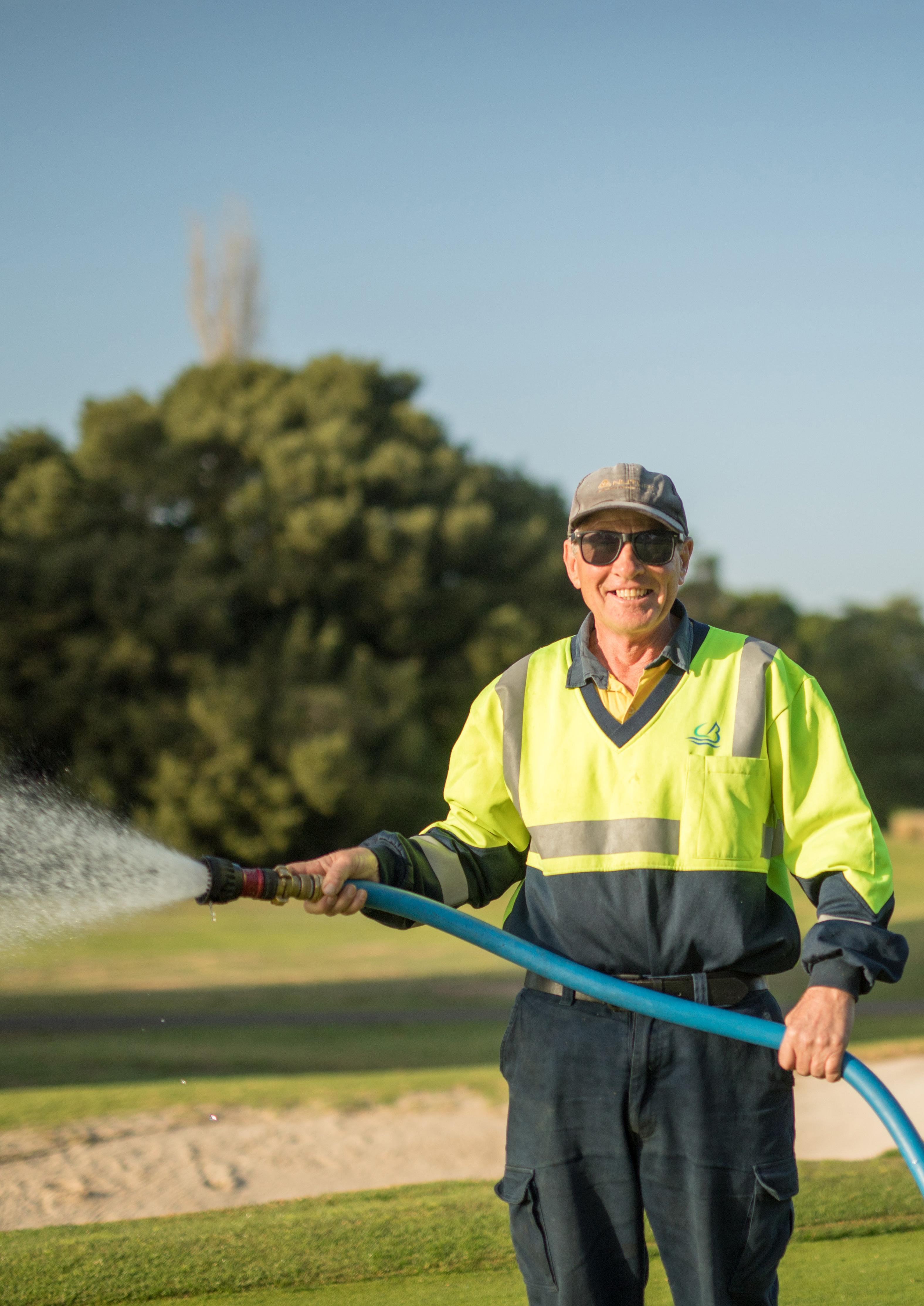
“Community engagement is the process by which the community influences the City’s decision making on issues that matter to them. It allows for transparency in governance and informed decision making by promoting a shared responsibility for the decisions the City of Canada Bay makes. The process of engagement builds trust and manages risk by creating strong two-way communication throughout the decision making process.”
5
Why we engage — our purpose
Council uses the engagement process to inform priority setting and to understand the community’s expected levels of service.
Effective community engagement also supports our capacity to achieve the City of Canada Bay’s CommunityStrategicPlan
It provides a framework for addressing the need for sustained collaboration, partnerships and new ways of involving
PRINCIPLE 1:
Deliberate — that the City adequately plans and tailors community engagement projects to suit our unique community.
HOW WE DELIVER ON IT:
and empowering our community under this plan.
The City of Canada Bay’s community engagement strategy is guided by four key principles:
• Project planning — implement a process to determine the level of engagement appropriate for each project and the techniques to be used.
• Stakeholder database — maintain a database of community contacts for representative groups, venues and communication opportunities.
• Staff training — ensure Council staff are appropriately trained in community engagement techniques and are informed about community engagement policies and guidelines.
Develop an organisation-wide process that is included in all project plans, and as part of project management training and guidelines.
PRINCIPLE 2:
Transparent — that community engagement projects promote transparency in the City’s work; that community engagement projects are clear in scope and purpose.
PRINCIPLE 3:
Inclusive — that community engagement projects seek to include the voices and opinions of all affected community members to create comprehensive outcomes for the community as a whole; that the City provides an array of opportunities for the community to share ideas and feedback.
PRINCIPLE 4:
Impactful — that community engagement projects result in tangible outcomes that reflect the community’s feedback; that the City communicates how the community’s feedback has been incorporated; that the City consistently evaluates the effectiveness of community engagement projects.
HOW WE DELIVER ON IT:
• Collaborate Canada Bay — provide clear and timely information on community engagement projects on our online platform, with regular updates, FAQs and the opportunity for community to ask questions.
HOW WE DELIVER ON IT:
• Accessibility — ensure a broad mix of engagement channels are used including events, advertising, media releases, radio, website, public meetings, surveys and individual consultations in order to make public participation in decision making convenient.
HOW WE DELIVER ON IT:
Feedback loop — ensure the outcome of each community engagement activity is reported to participants in an appropriate way. This may include individual letters/emails or broad media releases or social media posts as required.
• Evaluation — commit to evaluating the effectiveness of each project with the project team, as well as annual reporting to leadership and seeking feedback from participants on the engagement process.
All of our work is underpinned by our values: our residents and volunteers, the economic health of our City, our unique environment, our foreshores, the quality of our recreation, and the character of our culture.
6

7
What we engage on –our service scope
Council is committed to delivering a wide range of services for the community to work towards achieving the community aspiration and priorities as identified in the community strategic plan. The section below shows the services Council delivers.
Community services
• Advocacy
• Children and family needs
• Community Grants and Club Grants
• Community safety and crime prevention
• Disability inclusion
• Positive ageing
Early childhood education and care
• Victoria Avenue Children’s Centre and Precinct
• Wellbank Children’s Centre
• Operational and business support
Five Dock Leisure Centre
• Health Club
• Gymnastics
• Stadium
• Operations
• Children programs Libraries
• Five Dock and Concord libraries
• Library programs
• Library planning and strategy
Place management
• Events
• Place management
• Cultural development
• Community sponsorships
• Economic development
• Smart city Recreation
• Cabarita and Drummoyne Swimming Centres
• Recreation planning
• Management of Barnwell Park and Massey Park Golf Courses
• Booking and use of parks and open space
• Major events at Drummoyne oval
Building and streetscape maintenance
• Building maintenance
• Parks and sports field maintenance
• Streetscape maintenance
• Miscellaneous support services
Cleansing operations
• Street and footpath sweeping
• Amenities cleaning
• Reactive cleansing and litter removal
• Compactor operation
• Graffiti removal
Environmental health
• Public health compliance
• Environmental health compliance
Environmental sustainability
• Strategies and policies
• Council operations – initiatives
• Community events and education
• Community initiatives
• Committees and stakeholder groups
• Grants Garden services and Bushcare
• Parks, reserves, traffic infrastructure and foreshore maintenance
• Bushcare
Open space planning
• Open space asset management
• Water security and energy efficiency
• Plans of management and masterplans
• Urban canopy services
Parks and water
• Community mowing
• Parks maintenance
• Operation and maintenance of water treatment plants
• Operation and maintenance of remote telemetry lighting and irrigation systems
• Sports field rebuild projects
Sports fields and golf courses
• Operation and maintenance of Barnwell Park and Massey Park Golf Courses
• Operation and maintenance of sports fields
Strategic asset services and innovation
• Strategic asset services
• Stormwater and floodplain management
• Marine asset management
• Engineering assessment referrals
• Management of developer works within the public domain
Tree services
• Public tree services
• Private tree services
Waste management
• Waste collection
• Strategic direction
• Community events, facilities and programs
• Education
• Illegal dumping and waste investigations
Drainage work and infrastructure
• Stormwater drainage management
• Seawalls and marine Structures management
Assessment and construction of driveway and ancillary works
• Assessment and inspections
• Quotations to clients
• Construction (driveway and ancilliaryworks)
• Formwork inspections
• Road opening permit approvals
Utilities restoration
• Utility restorations
• Driveways and road opening permits
• Civil project work (CAPEX and OPEX)
• Infrastructure maintenance and renewals
Infrastructure works
• Footpath, kerb and gutter maintenance
• Minor civil projects
• Footpath, kerb and gutter renewals
• Road maintenance
Infrastructure planning
• Investigations and civil design
• Project planning and management
• Infrastructure asset management
• Capital and renewal works
Traffic and transport
• Road approvals
• Education
• Parking
• Traffic
• Development assessments
• Transport advocacy
• Active transport
Community engagement
• Community engagement
Major projects
• Projects delivery
• Project management
Strategic planning
• Land use planning
• Heritage protection
• Geographic information system
• Social planning and community participation
• Planning advice and planning certificates
• Development contributions
8
Building and compliance
• Accredited certifications (construction, complying development and occupationalcertificates)
• Principal certifying authority(inspections)
• Building compliance and enforcement
• Swimming pool inspections
• Fire Safety
Law enforcement and parking
• Parking enforcement
• Ranger enforcement
Council building and property
• Leasing and licensing
• Property portfolio management
Customer service – Civic Centre
• Counter service
• Call Centre
• Name and Address Register (NAR)
Mayoral and Councillor Support

• Civic events
• Support services
• Small grants program
Media and communications
• Media relations
• External and internal communications
• Mayoral management
• Council departmental support
• Graphic design
Statutory planning
• Development Applications
• Planning appeals
• Advice Council venues for hire
• Bookings of community halls and venues
• Catering
Business improvement*
• Corporate improvement Corporate strategy*
• Corporate planning
• Corporate reporting
Financial management*
• Strategic financial management
• Annual budget management
• Corporate financial accounting and reporting
• Financial systems maintenance
• Cashflow management
• Accounts payable
• Accounts receivable
• Rating Services
Fleet and mechanical workshop*
• Fleet and plant maintenance and repairs
• Fleet and plant procurement
• Community recycling service
• Council store Governance*
• Governance
• Compliance
• Council and Committee Meetings
• Elections
• Support for elected representatives
Information systems*
• IT application
• IT infrastructure
• IT helpdesk
People and culture*
• Human resource operations
• Organisational development and learning
• Work Health and Safety
• Workers compensation
• Payroll
Procurement*
• Procurement planning and strategy development
• Tendering system management
• Contract management and preferred supplier program
• Procurement system management and development
• Conserve contractor management system
Records management*
• Information and correspondence management
• Records system management and compliance
• Government Information Public Access Act (GIPA Act)
Risk management*
• Business continuity plan and risk framework
• Corporate insurances
• Corporate claims management
* Internal service
9
Levels of government in Australia and their major areas of responsibility
While we work with the community to understand the needs, wants and future focuses of those who live, work and visit the City of Canada Bay, we are able to work only in an advocacy role with regards to matters concerning the NSW Government which include:
The City of Canada Bay is also required to integrate the strategic plans created by the NSW Government with our own strategic plans. The Federal Government responsibilities include security, defence, immigration, currency and the environment, and the City of Canada Bay is also required to comply with the rulings, legislation and planning documents developed by the Federal Government.
with the NSW government responsibilities, we are able to work in an advocacy role only regarding Federal government responsibilities.
planning.
10
• Main roads • Public transport • Housing • Education • Health • Emergency services • Regional
As
Local matters such as: Town planning Resource recovery Libraries and community facilities Dog registration Local roads State matters such as: Roads Health Education Housing Public transport Police and Ambulance services Federal matters such as: Security Defence Immigration Environment 1 Federal/ Commonwealth / Australian Government 6 State and 2 Mainland Territory Governments 700 local Government
How we engage
The City of Canada Bay uses a range of engagement methods to reach our community — residents, workers, community groups, business, government and industry stakeholders — to share their feedback and ideas with us to help inform council decisions.
A combination of methods taken is unique to
•
•
•
•
•
•
•
•
•
•
•
•
project, and can include:
dedicated online engagement platform collaborate.canadabay.nsw.gov.au
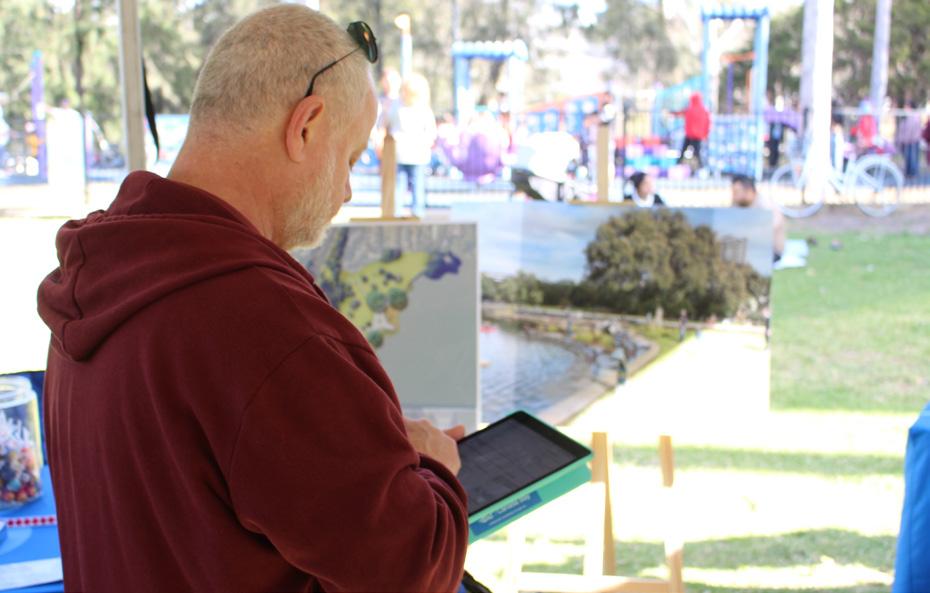
and information sessions — both online and in-person
meetings and roundtable discussions
Inclusion Committee,
Committee, Audit, Risk and
Committee,
Committee, Rhodes Community Committee

“Collaborate Canada Bay (collaborate.canadabay.nsw.gov.au) is where we present all our online community consultations, providing key information, participation opportunities and updated information as projects go from consultation to delivery. It is a state of the art platform with tools that include surveys, polls, social mapping, forums, multimedia sharing and participatory budgeting tools. We also report back on engagement results and outcomes when projects are completed on this platform. Project following capabilities also allow community members to register to receive information on projects that are relevant to them.”
•
•
•
11
each
Our
Workshops
Stakeholder
Children and youth workshops
Social media
Events — pop-ups, drop-ins, community events
Media outreach
Door knocking
Letter box drops
Website information
Site signage
Advisory panels and committees including the Access and
Environmental Advisory
Improvements
Traffic
Public exhibitions
Interagency meetings
Annual customer satisfaction survey.
How we engage key community stakeholder groups
We will use the following engagement methods, or a combination of these methods, to engage our key community stakeholder groups. Methods will vary depending on the needs of the engagement, that is:
• Purpose
• Scope
• Complexity of subject matter or sensitivity of project
• Level of engagement required.
Community stakeholder group Engagement methods
Residents
Visitors
Local
Young
People
Culturally
Children
Older
Sporting
Community
and polls
surveys
media polls
and information sessions
Door knocking
and pop-up engagement activities
and polls
surveys
media polls
and pop-up engagement activities
and polls
• Workshops and information sessions with business owners and local Chambers of Commerce representatives
•
knocking
and polls
surveys
media polls
and polls
Community workshops and information sessions with Auslan interpreters
Workshops and information sessions with local service providers
and polls translated into community languages
and information sessions with bilingual facilitators
and pop-up engagement activities
and pop-up engagement activities
information sessions
and pop-up engagement activities
information sessions
and polls
and information sessions
12
and ratepayers • Surveys
• Intercept
• Social
• Workshops
•
• Events
and workers • Surveys
• Intercept
• Social
• Events
business • Surveys
Door
people 18-24 • Surveys
• Intercept
• Social
with disability or chronic illness • Surveys
•
•
and linguistically diverse residents • Surveys
• Workshops
• Events
and adolescents (5-17 years) • School workshops • Youth surveys • Events
people • Surveys and polls • Intercept surveys • Workshops and
• Events
groups and clubs • Surveys and polls • Workshops and
groups(formal and informal) • Surveys
• Workshops

we engage — who we are
14 Population 97,022 estimated population in 2022 Land area 19.9km² Age structure Age (median/suburb) 36 median age The median age of our community is 36 years, however the spatial distribution of age groups across the LGA is diverse Dwelling types 38.6% separate houses Households 31.2% families with children 0 5 10 15 20 25 85+70 - 8460 - 6950 -5935-4925 - 3418 - 2412 - 175 - 110 - 4 PERCENTAGE % AGE GROUP City of Canada Bay % Greater Sydney % 9.3% semi-detached, row or terrace houses 26.2% couples without children 50.7% flat, units or apartments 20.7% single persons 36 median age 28 - Strathfield 29 - Rhodes West 44 - Abbotsford 48 - Cabarita36 median age 28 - Strathfield 29 - Rhodes West 44 - Abbotsford 48 - Cabarita The areas with the youngest and oldest populations are: Who
15 Ancestry 24.7% new migrants Languages (spoken at home, other than English) 7.1% of residents do not speak English well or at all Housing tenure 0 2 4 6 8 10 GREEKCANTONESEKOREANITALIANMANDARIN PERCENTAGE % LANGUAGE 0 5 10 15 20 25 30 35 SOCIAL HOUSINGRENTEDBEING PURCHASEDFULLY OWNED PERCENTAGE % HOUSING TENURE City of Canada Bay % Greater Sydney % 24.7% new migrants 52.2% - Strathfield triangle 46.2% - Rhodes (West) 7.3% - Russell Lea/ Abbotsford 7.5% - Cabarita 7.1% not proficient in english 2.9% - Drummoyne 15.4% - Rhodes 16.8% - Strathfield triangle 9.8% 29.2% 27.8%27.7% 31.5% 32.7% 28.0% 7.1% 4.0% 3.9% 2.2% 0 5 10 15 20 INDIGENOUSIRISHITALIANCHINESEAUSTRALIANENGLISH PERCENTAGE % NATIONALITY 19.7% 17.5% 16.9% 14.8% 9.1% 0.5% 2.7% 4.6%
How we enact social justice principles of access, equity, participation and rights in our community engagement
We are committed to engaging with all stakeholders in the City of Canada Bay, including hard to reach people such as the elderly, young people, those living with a disability and culturally and linguistically diverse communities.

This includes commitment to our Disability InclusionActionPlan(DIAP). We are committed to supporting people with disability to be active and engaged in our community.
Following extensive community consultation, on 28 September 2021, Council endorsed a DisabilityInclusionActionPlan (DIAP) for 20212025. The DIAP can be viewed here: bit.ly/ccbdiap2021-25
With regards to community engagement, we provide:
• Translation of engagement materials and bilingual educators and translators at relevant community events
• Easy to read documents
• Access to key strategic documents at Council sites (Civic Centre, Concord Library, Five Dock Library, child care centres etc.)
• In person accessible events to discuss issues and ideas with project teams for every consultation project.
The City also runs several committees to gather insights from a cross section of the community, and empower interested residents to be involved in the decision making process. These include the:
• Access and Inclusion Committee
• Rhodes Community Committee
• Environmental Advisory Committee
• Audit, Risk and Improvements Committee
• Traffic Committee.
“Central to our drive to engage with our diverse community is our commitment to being inclusive and accessible.”
16
We support community networks and programs, including:
• Youth programs and programs for older people
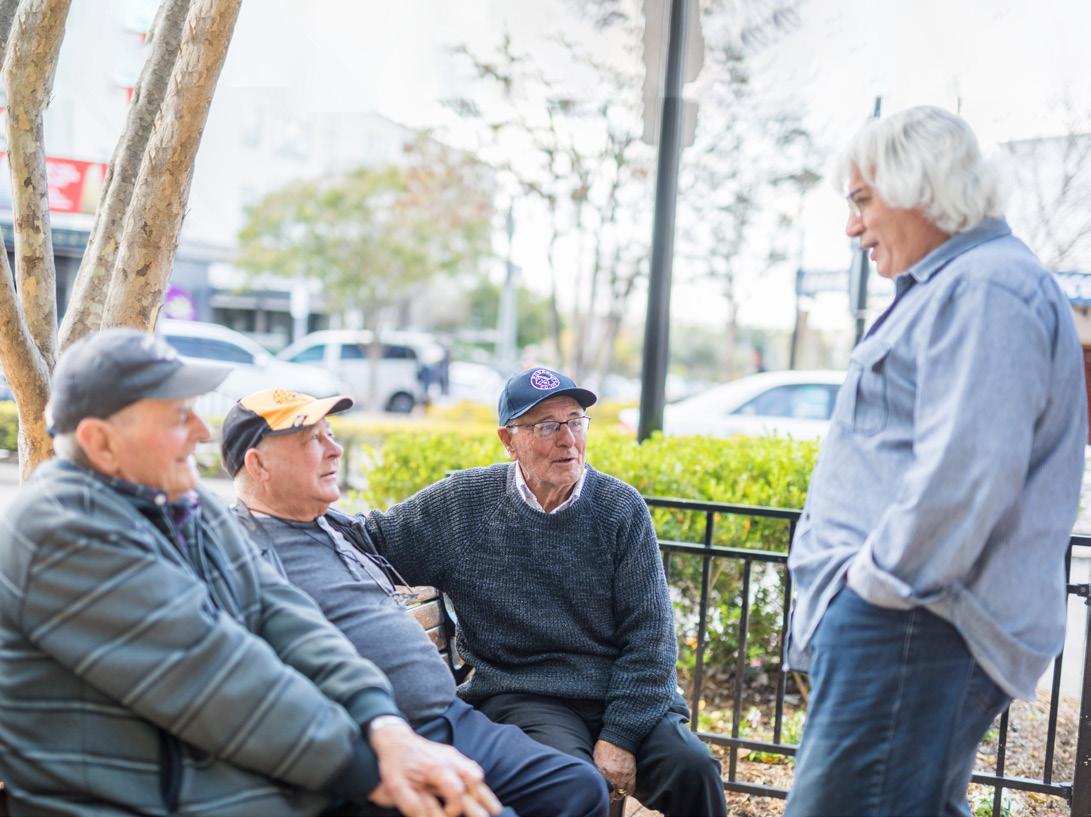
• Pop-up stalls at events such as local markets and community events including the Carols by Communities for Communities, the Lunar New Year festival and the Rhodes Moon Festival
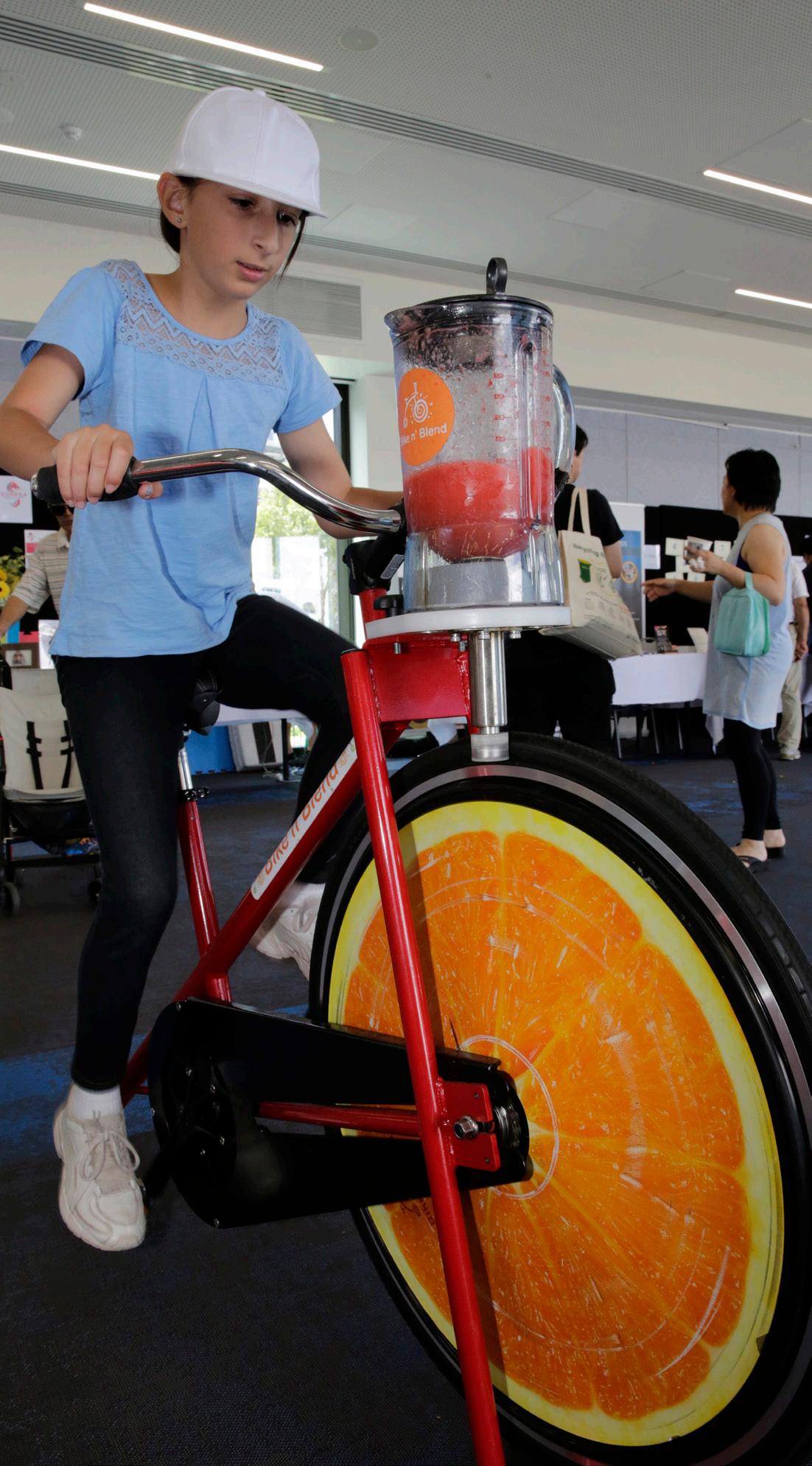
• ANZAC Day commemoration
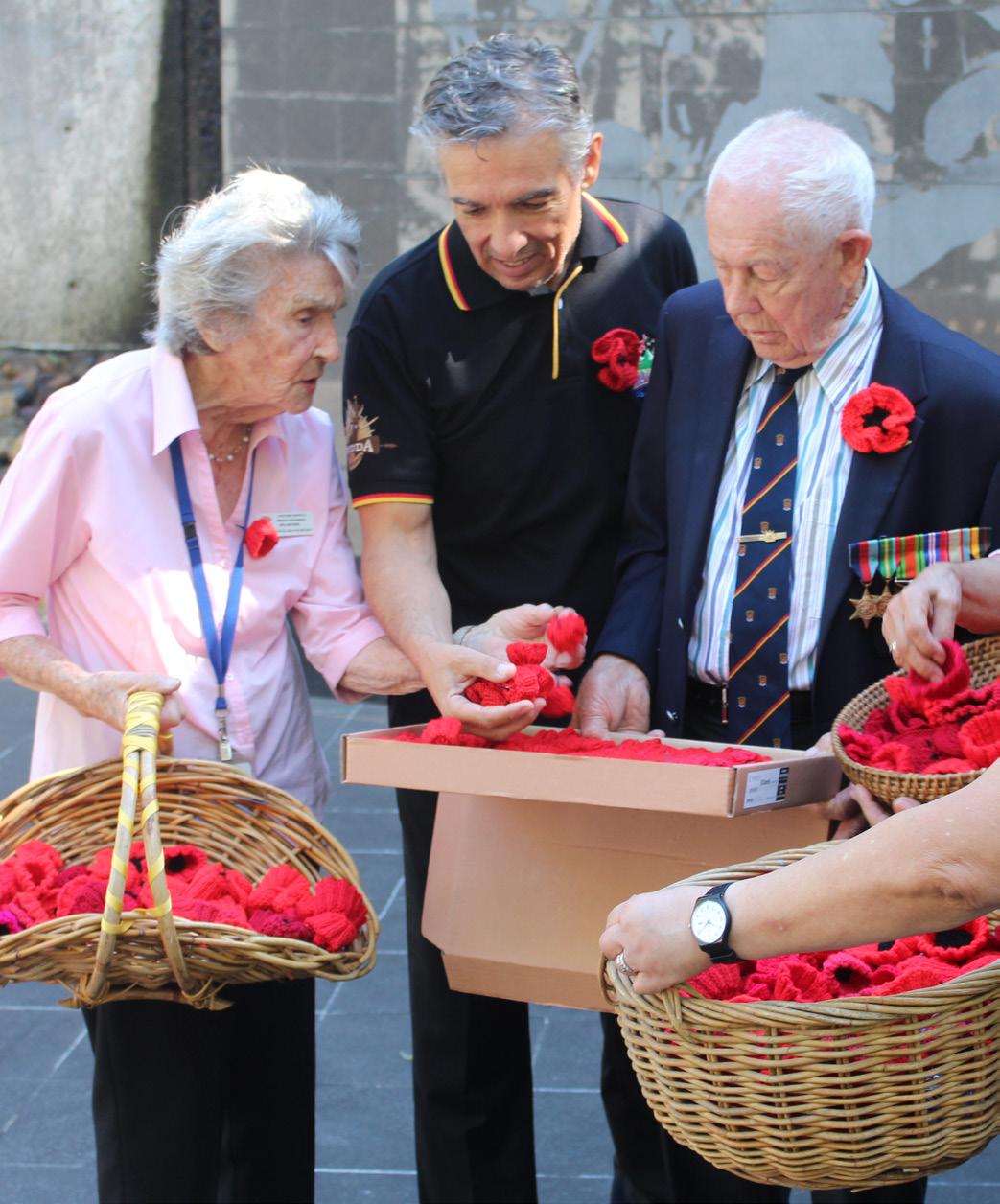
• Interagency forums
• Neighbourhood service centres and community centres.
Our targeted consultation activities include:
• Workshops for school children and young people
• Focus groups for people with disability.
Community languages
• We strive to ensure our websites and information comply with requirements of the Web Accessibility National Transition Strategy
• We have guidelines to assist staff to produce alternative formats and Easy English versions
• We use bilingual educators at relevant events.
Statutory consultation
Some elements of community engagement are directed by statutory requirements of the EnvironmentalPlanningandAssessmentAct and the Local Government Act .
17
Our community engagement process
Council’s approach to stakeholder engagement is built upon the IAP2 spectrum.

The IAP2 Spectrum for Public Participation is an internationally recognised platform used to provide guidance to the public service, not for profit sector, private industry and communities.
It is a model recommended by the Division of Local Government for preparation
of Community Engagement Strategies associated with the Integrated Planning and Reporting Framework.
The following process is a framework for project teams to refer to when developing a community engagement plan.
The IAP2 Spectrum for Public Participation
18

Our engagement strategy in action
Different projects require varied levels of engagement. Here are examples of the types of projects we engage on, what our goal is for these engagements, and how we communicate with our community throughout the process.
Note 1: For public exhibition, notification, and advertising requirements as they apply to Council’s planning instruments such as DAs and Planning Proposals, please refer to the City of Canada Bay’s Community Participation Plan, available on Council’s website on the “Development: Plans, Policies and Controls” page.
Note 2: This is not an exhaustive list of all engagement projects conducted by the City of Canada Bay.
What Iap2 Goal Our Promise How
• Council’s key long-term plans – e.g. Community Strategic Plan, Environmental Strategy
• New capital works & place making.
Involve
Work directly with the community to ensure priorities and ideas are reflected in the decision.
Provide a range of opportunities / channels for residents and ratepayers to share their views.
• Dedicated Collaborate Canada Bay website project page with participation tool/s – e.g. survey, social mapping, digital brainstorming tool. +Follow for stakeholders to receive updates through the platform
• Send email/mail/flyer to stakeholders
• Promotional posters at Council venues/on-site at project location if applicable
• Hold meetings/workshops/drop-ins with stakeholders – both online and in-person
• Ensure hard copy information is available
• Ensure a method of receiving hard copy submissions, calls and emails are made available
• Translate information as relevant
• Provide a summary of information in fact sheets or similar for an accessible approach to the documents
• Promote engagement opportunities in Council communication channels including social media, What’s On news, website, Collaboratedatabase, LGA wide Canada Bay News newsletter, rates notices (if timing is applicable)
• Email/alert stakeholders on decisions and progress updates.
• Upgrading of existing capital works –e.g. playgrounds, amenities blocks, bike paths and access plans
• Tree planting projects.
Consult Ask for community’s view about options/draft plans developed by Council. Ensure that the community’s feedback is incorporated into plans.
Provide a range of opportunities/ channels for residents and ratepayers to share their views.
• Dedicated Collaborate Canada Bay website project page with participation tool/s – e.g. survey, social mapping, digital brainstorming tool. +Follow for stakeholders to receive updates through the platform
• Send email/mail/flyer to stakeholders
• Promotional posters at Council venues/on-site at project location if applicable
• Hold meetings/workshops/drop-ins with stakeholders – both online and in-person
• Ensure hard copy information is available
• Ensure a method of receiving hard copy submissions, calls and emails are made available
• Translate information as relevant
• Provide a summary of information in fact sheets or similar for an accessible approach to the documents
• Promote engagement opportunities in Council communication channels including social media, What’s On news, website, Collaborate database, LGA wide Canada Bay News newsletter, rates notices if timing is applicable
• Email/alert stakeholders on decisions and progress updates.
20
What Iap2 Goal Our Promise How
• Council’s Annual Plan
– E.g. operational plan & Budget
• Council’s key planning instruments
– E.g. LEP, DCP, section 94, VPA
• Council’s other key Policies
• DA and planning proposals
(E.g. our Community Participation Plan, available on Council’s website on the “Development: Plans, Policies and Controls” page)
Other projects such as like-forlike upgrades to streetscape.
Consult Ask for community views about options identified by Council.
In additional to minimum statutory provisions, take all reasonable steps to ensure known stakeholders are advised of the opportunity to provide input.
• Dedicated Collaborate Canada Bay website project page with participation tool/s – e.g. survey, social mapping, digital brainstorming tool. +Follow for stakeholders to receive updates through the platform
• Send mail to stakeholders, send supplementary email to relevant stakeholders
• Ensure hard copy information is available
• Ensure a method of receiving hard copy submissions, calls and emails are made available

• Translate information as relevant
• Promote engagement opportunities in Council communication channels including social media, website, Collaborate database, LGA wide Canada Bay News newsletter
• Email/alert stakeholders on decisions and progress updates.
Inform Share balanced information on current activities and plans.
Take all reasonable steps to ensure stakeholders are advised of Council’s proposal.
• Send mail to stakeholders
• Provide contact details for stakeholders to ask questions
• Provide updates to stakeholders throughout process, including mail notification ahead of construction.
21

Our community engagement planning process
Step 1:
Identify and define the scope of the issue for engagement
The following is a guide for identifying and defining the issue and the scope of the engagement process.
Component Action
Background/context
Engagement focus
Engagement purpose and goals
Community and stakeholder participants
• Describe the background to the issue that will require engagement.
• Describe any legislative or policy requirements.
• Describe the issues that will form the focus of the engagement process.
• Define the goals (and objectives if required) that the engagement process aims to achieve.
• Identify community and stakeholder groups that the issue will impact upon, and whom may have a level of interest in, or whom may influence, the engagement and decision making process.
• Define the locality which may be the subject of the issue.
Roles and responsibilities
Step 2:
• Define the roles of Councillors, Council officers and community and stakeholder participants in the engagement process.
Determine the potential complexity and impact of issues that require consideration or decisions
The following table is a guide for determining the potential complexity and impact of issues.
High Impact — City Wide
• The issue will have a real or perceived impact across the whole city or on a number of different parts of the city or on a number of different population groups across the City.
• The issue has the potential to create controversy and/or conflict or has a high level of existing or potential community interest.
High Impact — Local
• The issue will have a real or perceived impact on a particular locality or suburb or on a number of different parts of the city or on a particular population group.
• The issue has the potential to create community controversy and/or conflict at a local level and/or there is existing or potential high level of local community or group interest.
Lower Impact — City Wide Lower Impact — Local
• The issue is city wide, recurrent and/or large scale and will have a low potential for dispute or require relatively minor behaviour changes by residents.
• The issue has a low risk of controversy or conflict.
• The issue involves a small change or an improvement to service or facility at a local level.
• The issue has a low risk of controversy or conflict.
23
Step 3:
Determine levels of community engagement
Council recognises that the level and extent of community engagement varies according to the complexity of issues to be considered, the potential level of impact upon the community, and the potential importance of the decision to be made. The greater the complexity and impact, the greater the extent of engagement required.
The following table is a guide to determining the extent of community engagement with the community.
Goals
Council’s goal for participation
Level of communication and/or community engagement required Inform Consult Involve Collaborate Empower
• To provide the community with balanced and objective information to assist them in understanding the problem, alternatives, opportunities and/or solutions.
• To obtain community feedback on analysis, alternatives and/or decisions.
Council’s approach
• Council will keep the community informed.
• Council will keep the community informed, will listen to and acknowledge concerns and aspirations and provide feedback on how public input influenced the decision.
• To work directly with the community throughout the process to ensure that community concerns and aspirations are consistently understood and considered.
• Council will work with the community to ensure concerns and aspirations are directly reflected in the alternatives developed and provide feedback on how public input influenced the decision.
• To partner with the community in each aspect of the decision including the development of alternatives and the identification of the preferred solution.
• To place final decision making in the hands of the community.
Typical actions involved
• Advise the community of a situation or proposal.
• Inform of a decision or direction. Provide advice on an issue.
• No response is required from the public.
• Identify appropriate stakeholders, individuals and/or groups and their needs or issues. Seek comment on project.
• Request response, but limited opportunity for dialogue.
• Take account of consultation feedback in decision making.
• Involve the whole community or identified segments of the community in discussion or debate.
• Assist the development of informed input through briefing and information dissemination. Use participatory approach in meetings and forums.
• Involve the community at different stages of planning and implementation.
• Council will work with the community to formulate solutions and incorporate advice and recommendations into decisions to the maximum extent possible.
• Establish partnerships for involvement in decision making. Use participatory approach in meetings and forums.
• Establish mechanisms for ongoing involvement. Develop ways of keeping the community informed.
• Allocate clear responsibilities for achieving outcomes.
• Council will implement what the community decides.
• Referenda, ballots, juries or other similar tools.

24
Table adapted from the International Association for Public Participation Spectrum of Public Participation

25 Step 4: Determine mechanisms for engagement Impact Level of communication and/or community engagement required and mechanisms and techniques to use Inform Consult Involve Collaborate Empower High impact — City wide • Media information Community briefings • Rates notice insert • Call Centre and front counter briefings • Newsletter content • Information displays • Media advertising • Website • Social media • Designated telephone hotline • E-newsletters and other email campaigns • Printed communication collateral • Computer basedpolling • Telephone surveys/ polls • Internet surveys • Events • Social media • Social media options • Focus groups • Interviews/meetings • Web-based meetings • Social media • Resident panel • Community facilitators • Task force or expert committee • Charrettes • Citizen juries • Deliberative dialogues • Deliberative polling High impact — local • Media information • Information displays • Media advertising • Social media • E-newsletters and other email campaigns • Printed communication collateral • Comment forms • Community info sessions • In-person surveys • Mailed surveys and questionnaires • Social media • Social media options • Resident panel • Charrettes • Citizen juries • Deliberative dialogues Lower impact — City wide • Media information • Community briefings • Rates notice insert • Call Centre and front counter briefings • City of Canada Bay News content • Information displays • Media advertising • Social media • E-newsletters and other email campaigns • Printed communication collateral • Computer basedpolling • Telephone surveys/ polls • Internet surveys • Events • Social media • Social media options • Interviews/meetings • Web-based meetings • Resident panel • Task force or expert committee • Deliberative polling Lower impact — local • Direct mail items • E-newsletters and other email campaigns • Printed communication collateral • Comment forms • Community info sessions • In-person surveys • Mailed surveys and questionnaires • Social media • Workshops • Public meetings • Social media • Advisory groups • Charrettes • Citizen juries • Deliberative dialogues
Step 5:
Develop individual community engagement action plans for specific engagement projects

Individual issues will require individual community engagement action plans.
These action plans are to be developed with reference to the CommunityEngagement Policy and to this CommunityEngagement Strategy .
Action plans provide in-depth details of the engagement process based upon Steps 1 to

4. In addition, action plans will:
• Provide a timeframe in which the engagement process will be carried out
• Identify how the outcomes of the process will be recorded and reported back to participants
• How Council will communicate the final decision to the participants.
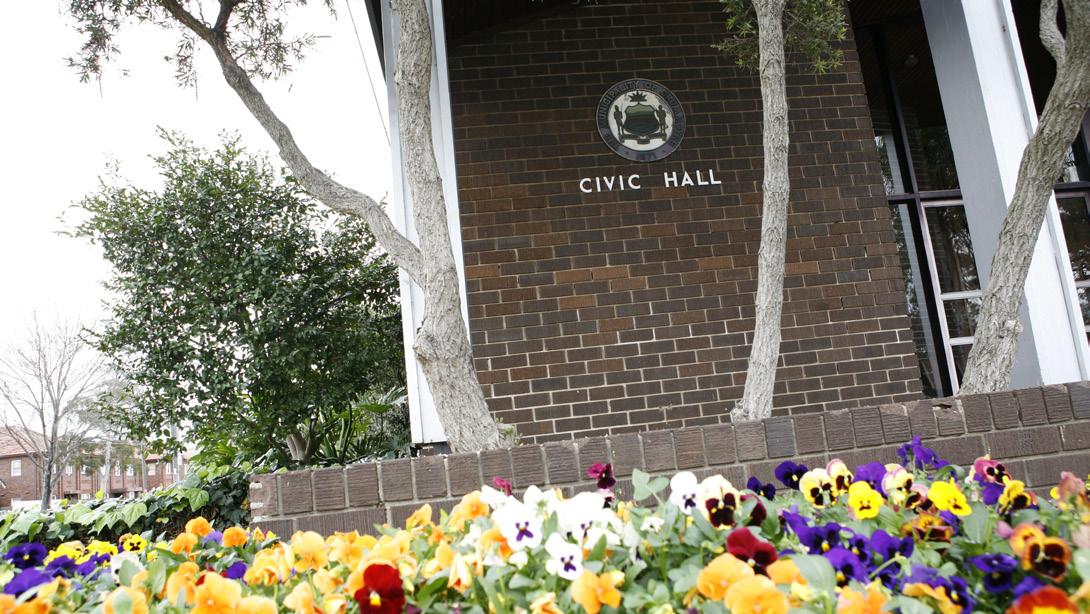
Step 6:
Implement the community engagement plan
Once the engagement plan is confirmed, project teams work to deliver against the plan, adapting the approach if needed throughout the project delivery timeline.
The length of a project delivery varies, however, statutory consultations are typically
26
Step 7:
Report on the community engagement project
At the end of a consultation period, the project team will report on the results of the consultation in the form of a Community Engagement Outcomes Report. If the project requires Council consideration and adoption at a Council Meeting, the Community Engagement Outcomes Report will form part of a Council Report.


The Community Engagement Outcomes Report, or a snapshot of the report, will be made public on our community engagement platform, collaborate.canadabay.nsw.gov. au and project teams will provide regular updates to the page and its followers on the progress of the project.
Step 8: Evaluate the community engagement project
We will assess all projects through the lens of the following areas:
1. Process – how well was the engagement designed and implemented?
2. Appropriateness – was the engagement appropriate and how well did the public and stakeholders accept the process?
3. Reach – were the people we reached representative of those affected by the decision?
4. Outcomes – were the intended outcomes of the engagement process met by the mechanisms and techniques implemented?
27
Community Engagement Policy
Council’s CommunityEngagementPolicy outlines Council’s commitment to, and the principles of, community engagement with the community on issues or decisions for which Council is responsible. It also defines ‘community engagement’, ‘community’ and ‘social justice’ for the purpose of this document. The Policy should be read in conjunction with this Community EngagementStrategy , and can be viewed here: bit.ly/engagementpolicyccb
Review of the Community Engagement Strategy

Council will formally review this strategy after each Council election, or as deemed required.
Evaluating the effectiveness of this strategy will be performed in the following ways:
• As part of the annual customer satisfaction survey
• In evaluation surveys at the end of specific engagements — for example pilot programs and large scale strategies
• Quarterly learnings workshops with project leads and community engagement coordinator
• Annual community engagement results reporting to leadership.
28
Community Strategic Plan
The Community Strategic Plan (CSP) is a high level plan that identifies the City of Canada Bay’s community’s main priorities and expectations for the future.
The CSP is reviewed with each term of Council (usually every 4 years). Extensive community engagement is undertaken as part of each review to ensure that the CSP reflects community aspirations and priorities, acknowledging that these may change over time. The regular review of the CSP also enables factors such as anticipated population growth and change, significant issues or challenges that have arisen, and State government plans or policies which affect our local area and community (such as transport infrastructure) to be reflected in the plan.
The CSP contains themes, goals and strategies which provide direction for the delivery of outcomes. It also includes targets and baseline data, so that we can measure our progress in working towards these goals.
The CSP provides a framework for all of Council’s plans, policies and budgets including the Delivery Program and annual Operational Plan.
Council is not solely responsible for implementation of the CSP as other levels of government, businesses and the community may also be involved in delivering aspects of the Plan.
Legislation and policy context
Council is required to prepare a CSP in line with the integrated planning and reporting requirements of the Local Government Act 1993 . The CSP will set the long-term vision and direction for the City of Canada Bay community and must:
• Address social, environmental, economic and civic leadership issues
• Be based on social justice principles
• Give due regard to the State plan (now superseded by the State Priorities) and other relevant State and regional plans.
Focus
Each Council in NSW must review and/ or develop its CSP, Delivery Program (DP), Resourcing Strategy, Operational Plan and adopt them for commencement in July of the year following local government elections.
In 2024, a new Council will be elected and we will undertake a review of the existing CSP to ensure that the plan continues to reflect the community’s aspirations for the future of the City of Canada Bay.
The review will comprise targeted community engagement to review the current CSP themes, priorities and objectives. The project will also include a review of:
• Council’s end of term report
• State level plans affecting our community e.g. Metro West plans
• Community satisfaction surveys
• Top 10 community priorities
• The 5 themes, goals and strategies (i.e. fine tuning the wording/sentences)
• Key engagement report findings from recent years.
The events of 2020 have affected the community and its perception of Council and Council services. This review will provide us with an opportunity to help enhance, reaffirm and/or renew our City’s sense of community and place. The review also provides an opportunity to:
• Consider changes to priorities and objectives
• Address significant issues or challenges for the our City that have occurred since the Plan was last adopted
• Develop baselines and targets for the CSP that currently do not exist
• Revise strategies if circumstances have changed during the past 4 years.
CSP Engagement
Each time the CSP is reviewed, Council prepares a detailed engagement plan, which is guided by the principles set out in Council’s Community Engagement Policy and this engagement strategy.
29
The objectives of the detailed CSP engagement plan seek to:
• Demonstrate Council’s commitment, expectations and process for community engagement
• Ensure that engagement techniques are inclusive and provide opportunities for the widest participation particularly for those groups that are hard to reach
• Ensure the process is responsive and allows for ongoing communication to the public on how their input has been included
• Provide an opportunity to inform the community on the services offered by Council
• Test themes for relevance, priorities and whether our community believes we’re meeting them
• Review and align state and federal level objectives with our own
• Highlight any gaps in the current CSP
• Provide the community with an opportunity to engage with Council and align their aspirations with the strategic plan moving forward
• Seek input and endorsement of themes, tactics and targets for the reviewed CSP.
Community and stakeholder groups
The following stakeholder groups will be targeted as part of this engagement plan:
• Residents
• Rate payers
• Target community sectors and groups, non-government organisations, clubs, etc
• Business community and developers
• Government agencies
• Stakeholders involved in specific known and/or emerging issues
• Lobby groups, interest and support groups
• Media
• Councillors
• Council staff
• Members of Parliament
• Visitors
The needs of these groups require consideration so that all have an opportunity to participate and can access relevant information to assist in their involvement.
Engaging hard to reach groups within the community will be a key focus of the
engagement. Council’s goal is to understand the views and aspirations of as many in the community as possible.
Roles and responsibilities
Mayor and Councillors
Mayor and Councillors play a significant role in leading and directing community engagement and have a responsibility to ensure that Council’s community engagement principles are reflected in the community engagement strategy and individual action plans, and that the input of the community is respected in decision making.
Council officers
Council officers have an important role in developing and delivering effective community engagement opportunities around issues that may impact upon the community. Council officers have a responsibility to ensure that engagement techniques, materials and assessments are undertaken in accordance with the Community Engagement Policy and Strategy.
Community members
Community members have an integral role in participating in community engagement activities that are of interest to them.
Community members should do so with a willingness to take part in a two-way dialogue and be mindful that participation in a community engagement does not guarantee an outcome with which the individual may agree.
Level of Impact
The CSP relates to the whole of the City of Canada Bay area and its community. As it is a plan for the future it will have a high impact on the community. Therefore, engagement will occur at key stages in the CSP’s development with appropriate engagement techniques used so that target groups are well informed and are provided opportunities to participate.
Previous engagement activities will be considered in order to maximise the use of limited resources (including timing restrictions) and minimise the likelihood of consultation fatigue.
30
31

32 ENGLISH If you do not understand this information, please come to the Council or contact the Telephone Interpreter Service (TIS) on 13 14 50 and ask them to connect you to Council on 9911 6555. We will try to answer your enquiries by using an interpreter. ITALIAN Se hai difficoltà a capire questo documento presentati direttamente all’ufficio del Comune, oppure telefona al Servizio Telefonico Interpreti (TIS, numero di telefono 13 14 50) e chiedi di essere messo in contatto con l’ufficio del Comune (numero di telefono 9911 6555). Cercheremo di rispondere alle tue domande con l’aiuto di un interprete. GREEK Αν δεν καταλαβαίνετε αυτές τις πληροφορίες, παρακαλούμε ελάτε στο Δήμο ή επικοινωνήστε με την Τηλεφωνική Υπηρεσία Διερμηνέων (TIS) στο 13 14 50 και ζητείστε να σας συνδέσουν με τον Δήμο στον αριθμό 9911 6555. Θα προσπαθήσουμε να απαντήσουμε στις ερωτήσεις σας χρησιμοποιώντας ένα διερμηνέα. SIMPLIFIED CHINESE 如果您对这些内容不理解,请向地方议会咨询或致 电13 14 50联系电话口译服务(TIS),并在他们的帮 助下通过电话与9911 6555地方议会联系。h们将尽 力通过口译员回答您的问题。 KOREAN 이 정보내용을 잘 이해하지 못 하신다면, 심의회 (Council)로 방문해 주시거나, <13 14 50>으로 전화통역서비스를 이용하셔서 심의회(9911 6555) 로 연결해 달라고 요청하시기 바랍니다. 통역사의 도움을 받아 귀하의 문의사항에 답변해 드리도록 하겠습니다. City of Canada Bay 1a Marlborough Street Drummoyne NSW 2047 Telephone: 9911 6555 Email: council@canadabay.nsw.gov.au Online: canadabay.nsw.gov.au More information


























